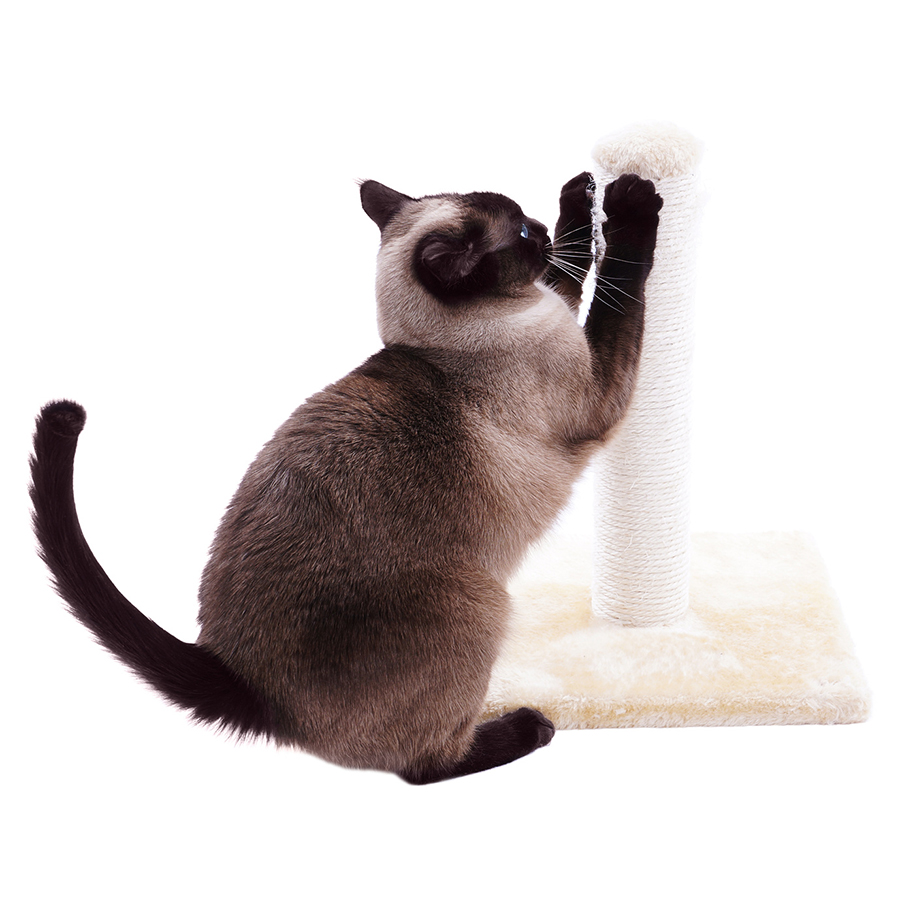How to prevent cats from scratching in undesirable areas
Scratching is normal cat behaviour, serving to groom the front claws and leave markers of the cat’s presence.
Cats may also scratch to stretch their muscles.
Proper training to scratch on appropriate surfaces, combined with nail care, can prevent damage in the home. The following information is pertinent in choosing a scratching post:
Many cats prefer vertical scratching posts; some prefer horizontal ones.
Vertical scratching posts must be sturdy and preferably tall enough for the cat to have a good stretch.
Scratching materials preferred by most cats are wood, sisal rope, and rough fabric.
Locate scratching posts near areas favoured by cats, such as windows or sleeping areas since cats often stretch and scratch upon awakening.
Start training your new kitten or cat to use scratching posts when first introduced to your home.
Cats return to favourite or chosen scratching sites, so motivate them to use the scratching post you select and avoid letting them use the furniture. This can be done by enticing your cat to the post upon awakening, rubbing catnip on the post, and holding treats or toys partway up the post to encourage stretching and scratching. You can secure an appealing toy, such as feathers, at the top of the post. Rewards can be given at each step—as the cat approaches the post, touches it, and finally scratches it. Never yell at or punish the cat.
If your cat already scratches in an undesirable area, talk to one of our veterinarians or a veterinary staff member. They will help determine your cat’s likely preferences—for a vertical or horizontal scratching post, for the type of material that will draw the cat to the post, for the location of the post. You can then make or purchase posts of similar fabrics.
Place double-sided sticky tape on inappropriate areas and reward use of the post. This helps direct the cat to the post. If necessary, the cat can be confined to an area where the scratching post is the only available scratching outlet. This establishes use of the scratching post and prevents inadvertent reinforcement for scratching off-limits household items.
Trim the tips of the nails every one or two weeks. If done correctly, this procedure is well accepted by most cats. Introduce nail trimming as part of routine handling to kittens.
Plastic nail caps, applied every 4-6 weeks, are an option for cats that are easy to handle. After trimming nail tips, fill the cap about a third of the way with adhesive, and fit the cap over the nail. The soft plastic covers prevents furniture damage when the cat scratches. Please advise us if you would like us to order these in for you.
Declawing is illegal in Australia.

Our Midland & Drovers Vet Hospitals are both accredited ISFM Cat Friendly Clinics.
The Cat Friendly Clinic programme is an internationally recognised assessment accreditation scheme which is open to any veterinary practice that cares for feline patients. There are certain requirements regarding design, equipment and facilities within the clinic, which must be met to achieve the standard. The clinic must also demonstrate that a high quality of care is provided to cats and that all staff understand cats and their needs in a clinic.
The benefit to the clinic is that not only will the scheme help to improve the clinical care of feline patients but may also increase the number of clients who are actively seeking a cat friendly clinic for their pet.




